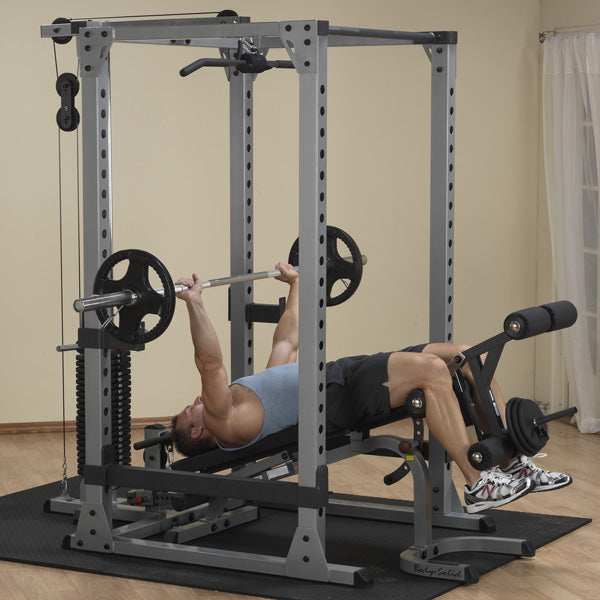We believe some people know something about bending dumbbell rowing. Of course, bent over dumbbell row is also a good training exercise, and bending dumbbell rowing also has many advantages. How to do the most standard bending dumbbell rowing? Let's find out together.
Bent Over Dumbbell Row Muscles Worked

Bend-over dumbbell row evolved from bent-over barbell row. Its advantage is that without the restriction of the barbell bar, the range of motion is increased, and the intensity of stimulation of the latissimus dorsi is increased. At the same time, to maintain balance during the leaning and dumbbell rowing process, more muscles are involved to achieve the purpose of the exercise. Leaning and rowing is the best way to increase the thickness of the latissimus dorsi. The main exercise is the middle latissimus dorsi. What you need to do is to master the essentials of learning and rowing training, and then choose the weight that suits you. The last thing left is to persist, and the back muscles with unevenness will appear.
How to bend over dumbbell row?
Starting posture: Standing position, feet shoulder-width apart, hips sitting backward (hip bend), spine maintains a neutral torso and bends down naturally, holding dumbbells naturally drooping in both hands, palms backward, using the back of the legs and the back of the buttocks Tension to support the body (not the lower back), tighten the core muscles to stabilize the spine! Avoid shaking during the action.
Action essentials: Keep your back straight and the torso stable, the back muscles contract to drive the shoulder blades back, and at the same time lift the elbows! Pull the dumbbell to your waist; then clamp the shoulder blades and stay for a second! Then slowly lower the dumbbells until the back muscles are fully stretched (open the shoulder blades)!
Tips for bent-over dumbbell row
1.Tighten the core muscles, and always maintain a neutral and stable spine during the movement, without flexion.
2.The angle of leaning is recommended to be close to parallel to the ground.
3.Feel the work of the back muscles and the movement of the shoulder blades; the arm is like a hook and should not be involved too much!
Precautions
1.Ensure the standard of movement, the back must not bend, otherwise, it will cause back injury
2.Pay attention to the weight of the dumbbells used. Do not use heavyweights at the beginning. After the technique is stable, you will gradually gain weight. If you are not sure, please use lighter dumbbells.
3.When training, the low back is not straight enough to damage the spine. The arm placed on the flat bench should keep the elbow joint slightly flexed, and the leg placed on the ground should keep the knee joint slightly flexed. Moving too fast will reduce the training effect, and the amplitude will be too large. Increase body twisting and increase the possibility of injury.
4.Breathing method: Exhale when the dumbbells are pulled to the sides of the body and return to the starting inhalation.
Benefits Of Bent Over Dumbbell Row
The dumbbell rowing with two arms is aimed at many muscles of the upper and middle back, including the trapezius, infraspinatus, rhomboid, latissimus dorsi, teres major, and teres minor. The pectoralis major (chest) and brachialis (upper arm) also work with the shoulder rotators.

One of the benefits of leaning over rowing is that it can improve the stability of the spine. Use dumbbells to make it a moderate-intensity exercise. When you add this exercise to your daily exercise, you can burn more calories.
Dumbbell leaning and rowing is a compound functional exercise that you can use the same movements throughout the day, for example when picking up a heavier object. Knowing how to properly position your back and support your abdominal muscles can protect you from stress.
Bent-Over Dumbbell Row Variations
You can change this exercise to better suit your fitness level and goals.
Single-Arm Dumbbell Row

Don't lift two weights at the same time, but lift one at a time. Unilateral exercise (using only one side of the body at a time) is more conducive to increasing power output than bilateral exercise (using both sides of the body at the same time).
You can do one-arm rowing by switching back and forth between the left and right arms continuously (right-left-right-left), or do all the reps on the right and then all the reps on the left.
Bent-Over Barbell Row

You can also use a barbell to do leaning rowing. If you choose this variant, hold the barbell with your palms facing inward and bend your hips 45 degrees, then support your abs and lift the weight.
Bent-Over Dumbbell Row in Lunge Position

Perform this exercise in a lunge position. In addition to your back, you can also exercise your hamstrings and gluteus maximus. In addition, some people find it easier to maintain balance in this position. To do this, stand up with one leg backward and the other leg forward when doing the dumbbell leaning over a row.


